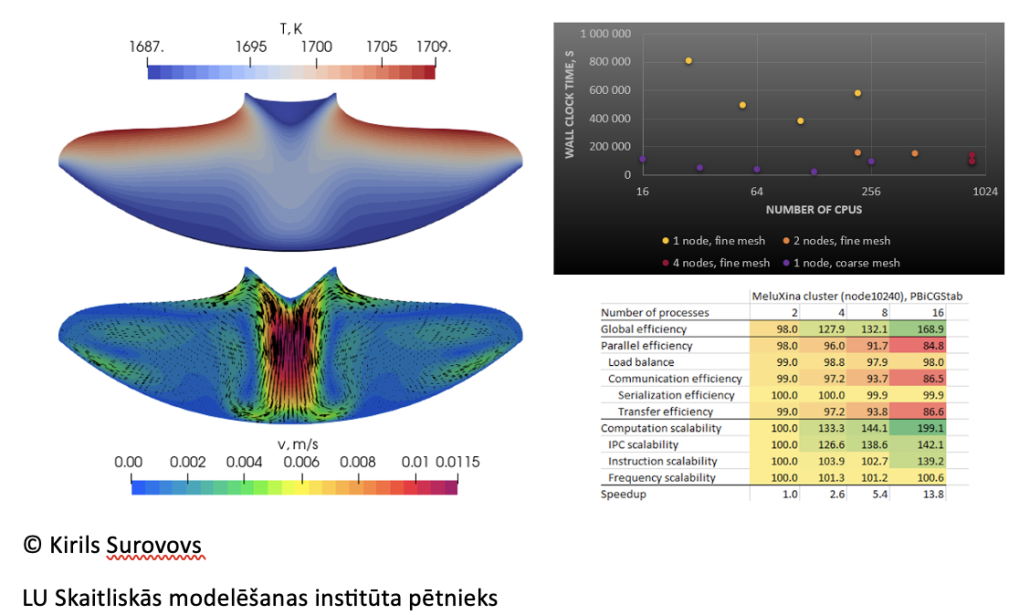LU scientist tests OpenFOAM on Luxembourg supercomputer MeluXina
Kirils Suvorovs, senior expert and researcher at the Latvian HPC competence Centre “SuperS”, tested the scalability of the OpenFOAM programme by comparing examples to Latvian supercomputers and the Luxembourg supercomputer MeluXina, which is the 12 th most powerful supercomputer in the EU.
Investigation of OpenFOAM hydrodynamic simulation stability and scalability
The project was devoted to silicon melt flow simulations (e.g., hydrodynamic simulations) using OpenFOAM C++ library. The OpenFOAM library is widely used in both academical and industrial research groups. However, the current experience shows that the higher the number of used cores, the lower is the numerical stability of a simulation, which leads to numerical errors and divergence. Therefore, it is desirable to test OpenFOAM stability on a large number of computational cores, thus determining its scalability for large-scale HPC applications.
The simulations on MeluXina cluster showed better scalability than on the previously tested clusters in Latvia (University of Latvia and Riga Technical University). Especially good result is, for example, almost 14-fold speed-up with the mesh with 3.2 million cells, when core number increased from 2 to 16. Such speed-up is superlinear (the speed increases more than the number of cores) and demonstrates the efficient use of HPC resources. During the project, optimal type of linear matrix solver (GAMG) and at least a lower bound of acceptable solver tolerances (9 times higher than standard) were obtained.
For more information: [email protected]





